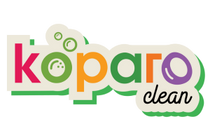
Could your cleaners be causing headaches?
HEADACHE FROM CLEANERS
We all know what a headache household chores can be, literally and figuratively. Especially during the COVID19 pandemic, when most of us have to do all the cleaning on our own.
Sometimes it is not just your dislike of the task or the physical strain that is causing those headaches. Ingredients in common household products have been linked to headaches, migraines, asthma, cancer, reproductive disorders, hormone disruption and neurotoxicity.
Why do you get those headaches after a round of cleaning?
The culprits causing you headaches are those innocent looking common household cleaning products like disinfectants, degreasers and cosmetics, which contain Volatile Organic Compounds or VOCs – gases released from various solids or liquids. They are bad news for migraine sufferers. VOCs though not acutely toxic, have compounding long-term health effects and can be carcinogenic, cause itchy skin, unexplained headaches, eye irritation, rashes and allergies. When we use products that contain VOCs around babies, pets and older people, they can be very harmful for them.

Harmful household products
This may come as a shock to you - ingredients in common household products have been linked to asthma, reproductive disorders, cancer, neurotoxicity and hormone disruption.
Environmental experts find that the average household contains about 62 toxic chemicals! We are exposed to them routinely as and when we use them. The synthetic fragrances in some of these products contain phthalates - the most commonly used plasticizers that can damage the liver, kidneys, lungs, and reproductive system. Oven cleaners emit noxious fumes when used, which can be dangerous to someone with asthma or respiratory problems, and can set off headaches.
Which cleaning products contain VOCs?
Here are some common cleaning supplies and household products that may contain VOCs and other toxic substances:
- Chlorine bleach
- Air fresheners
- Aerosol spray products, including health, beauty and cleaning products
- Oven cleaners
- Detergent and dishwashing liquid
- Furniture and floor polish
- Rug and upholstery cleaners
- Dry cleaning chemicals
So what can you do?
Here are some precautions you can take when using mainstream cleaning products:
-
Read and follow directions
Be sure read and follow the directions for use listed on the product carefully -
Ventilate
Ventilate the area you are cleaning so that there is enough fresh air and outlets for the noxious fumes to escape. Avoid using cleaning products in a small, enclosed space. -
Keep away from children
Store the products away from pets and children. Make sure they do not come in direct contact with the products when in use. -
Do not try to mix products!
Never mix products, you could be causing unwanted chemical reactions that could be very dangerous. -
What doesn’t suit you
Does your headache after the house has been mopped? Do you wheeze after a certain cleaner has been used at home? Identify and avoid products that don’t suit you. -
Call the doctor
Get in touch with your doctor if your cleaning related migraines and allergies are getting out of hand. -
Switch to natural cleaners
Find and use natural, non-toxic cleaning products instead.
Alternatives to chemical cleaners

Do-it-yourself
These are some safe and cheap DIY home cleaning methods:
-
Dusting
Use a microfiber cloth to capture dust more efficiently than regular rags. -
Homemade laundry soap
Buy “soap nuts” online or from a grocery store, place them in a cotton sack well secured by string and put into the washing machine with clothes for a natural wash. -
DIY oven cleaning
Place an ovenproof bowl with water in the oven and turn up the heat for 3-4 minutes to let the steam soften grease. Let the oven cool. Make a paste of baking soda,salt, and vinegar, in equal parts and apply on the insides of the oven. Scrub. Wipe clean with a damp cloth. -
Make your own carpet shampoo
Combine 3 cups water, ¾ cup plant-based liquid soap, and 10 drops peppermint essential oil and run into the soiled areas of the carpet using a damp sponge. Allow it to dry completely. Then vacuum over the surface. -
DIY bathroom mildew remover
It’s hard to prevent mildew and mold buildup on overcast days in places with less ventilation. To remove mildew, mix 2 cups of water with 1/4 teaspoon each of tea-tree and lavender oil in a spray bottle. Shake the mix well and spray on places with mould and mildew. Leave on for 10-15 minutes and wipe off with a dry cloth. -
DIY sink cleaner
Mix ½ cup baking soda and six drops of an essential oil of your choice. Rinse the sink with hot water, then sprinkle the mix into the sink. Now pour about ¼ cup vinegar around the sink. This will create a fizz. Once that settles, scrub with a cleaning brush or damp sponge. Next, rinse the sink with hot water.
Non-toxic cleaners
Find products that perform and contain ingredients that are safer for human health and the environment. There are many non-toxic, plant based cleaning products available which do not cause these health concerns, are safe and are as effective for cleaning as mainstream cleaning supplies. You could gradually start replacing your chemical cleaners with these bio-degradable, organic cleaners and see the difference for yourself.
Read about our non-toxic, plant based, biodegradable cleaning products - What Is In Koparo’s Non-Toxic Cleaning Products?









